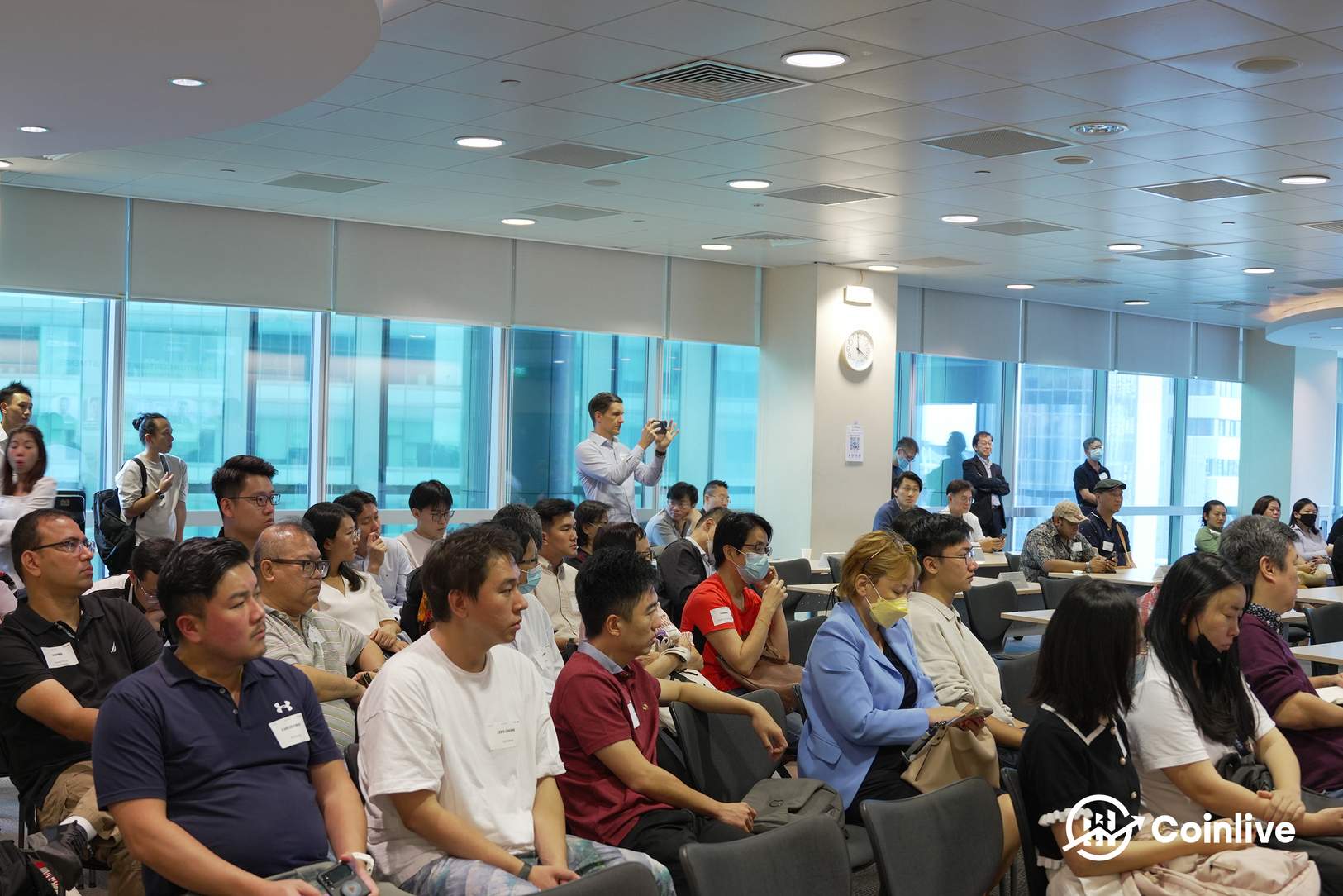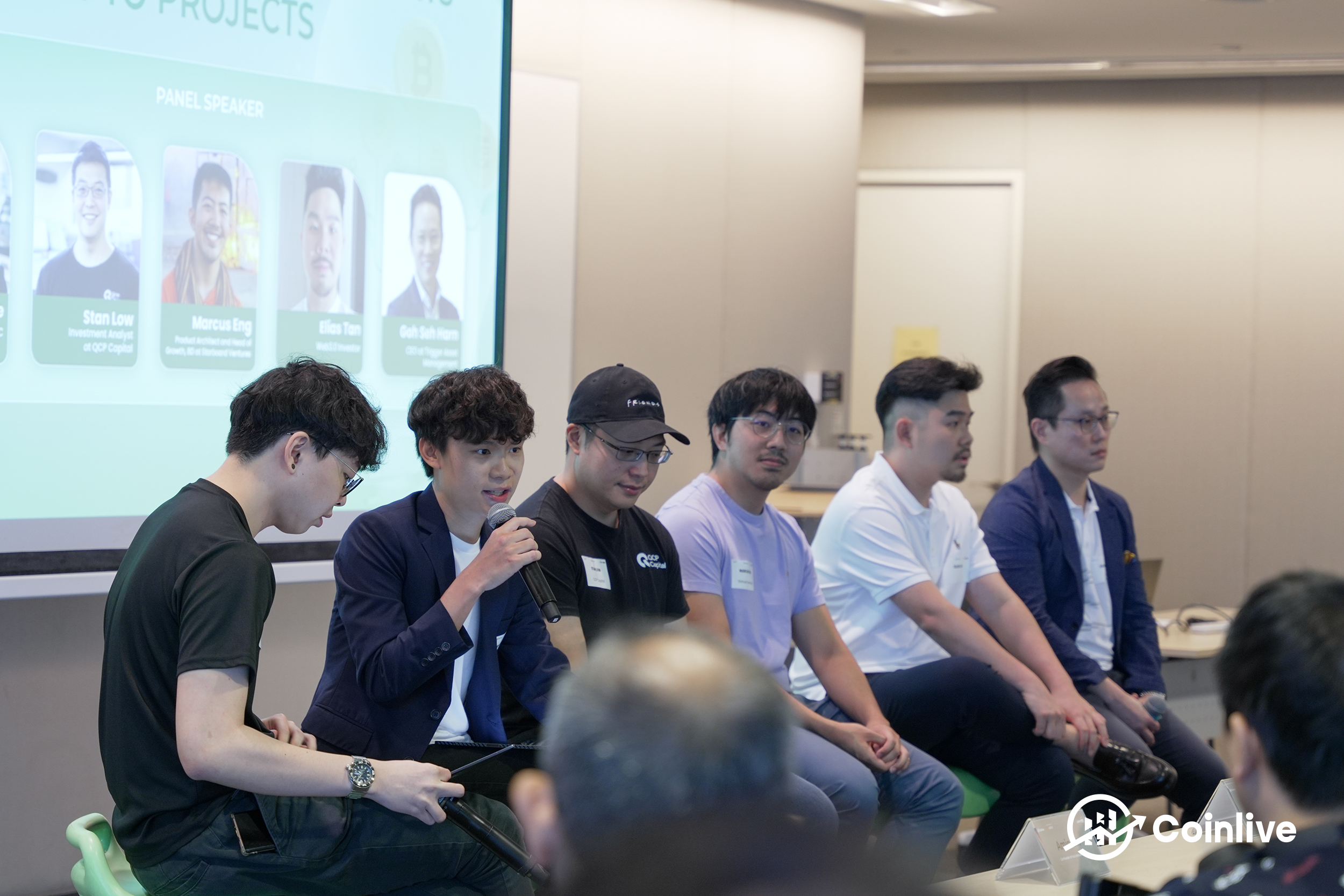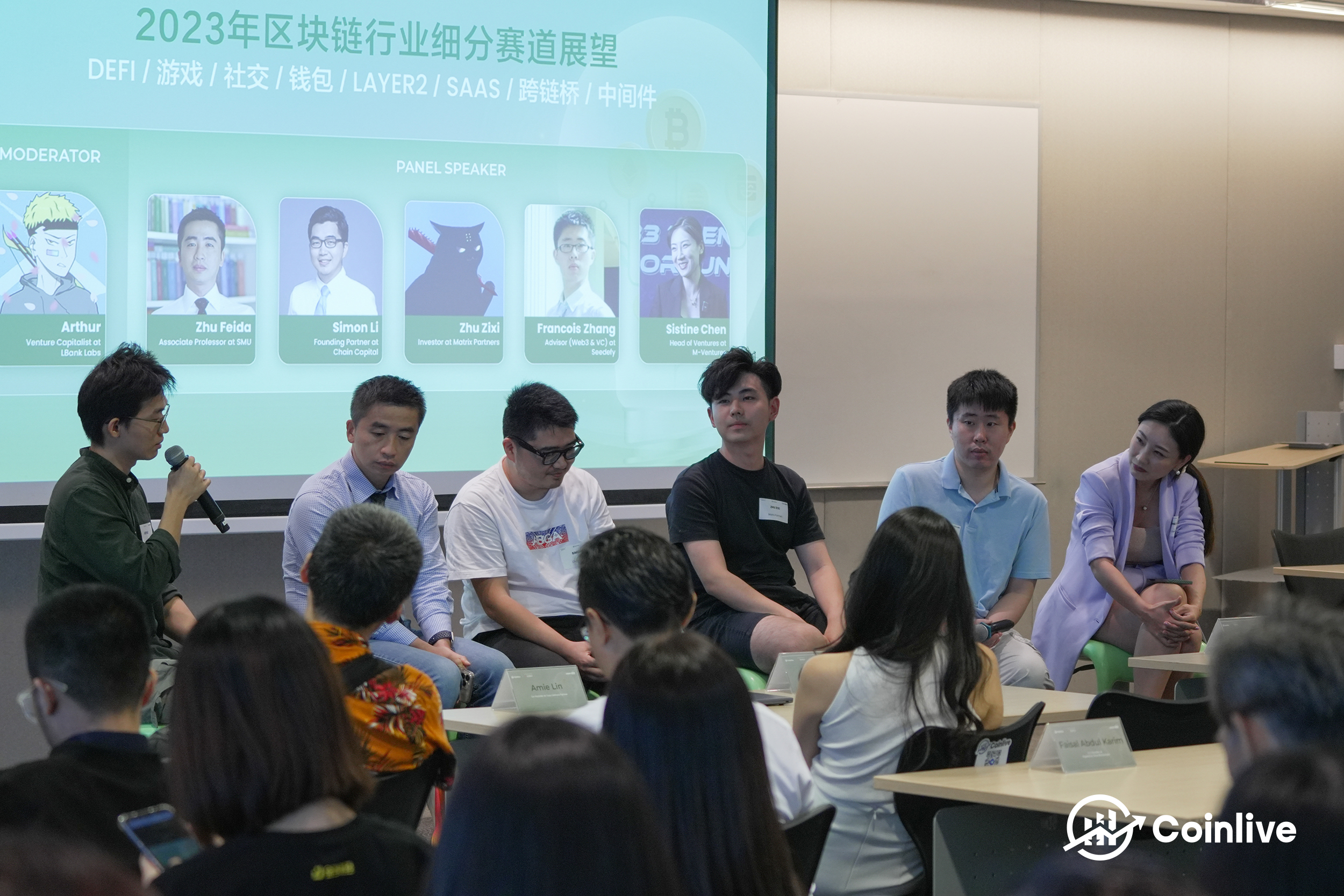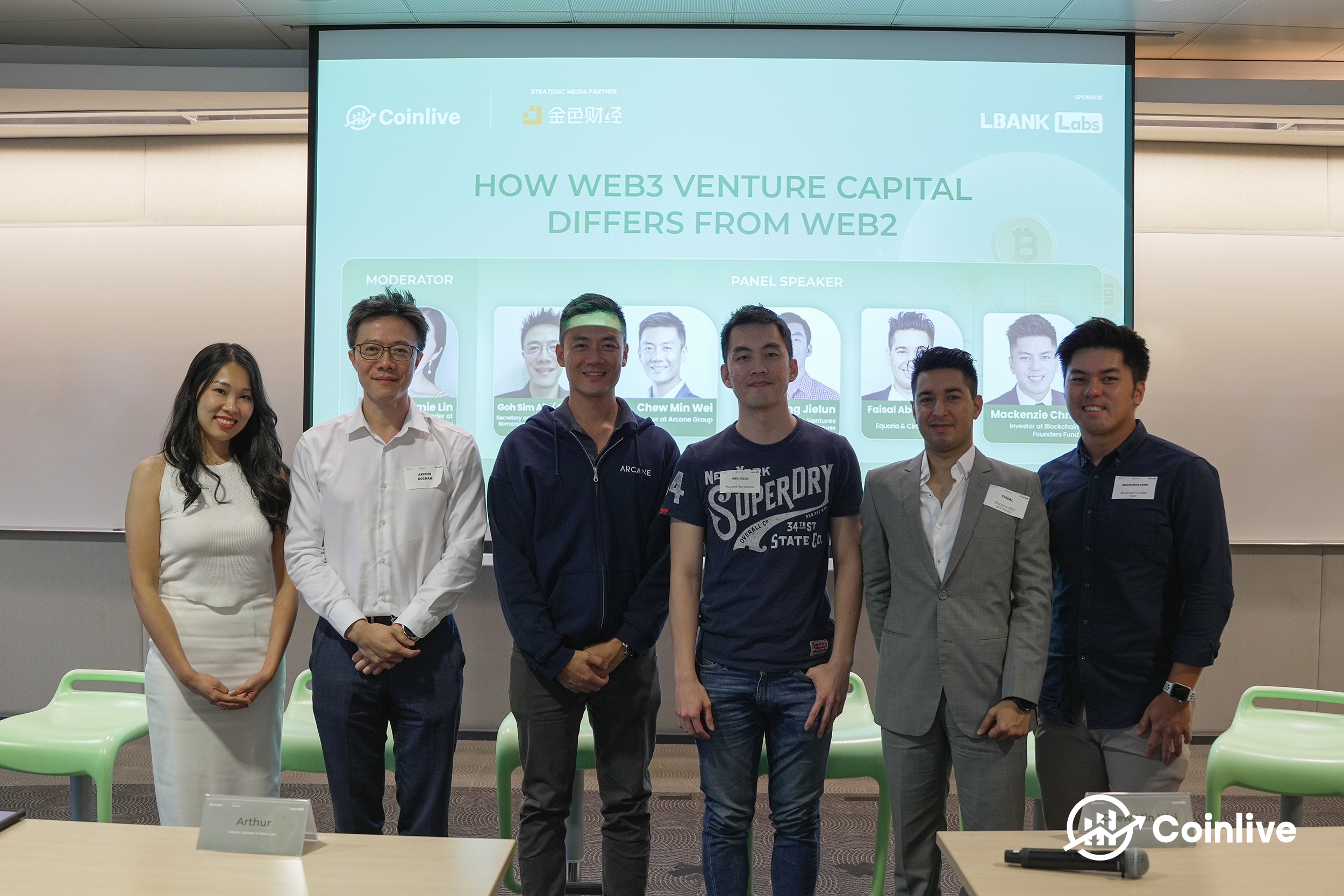Coinlive's Web3 VC Edition Event Predicts Explosive Growth for Web3 in 2023 and Beyond

Coinlive, an independent cryptocurrency news outlet based in Singapore, hosted its first event of the year, sponsored by LBank Labs with Jinse Finance as the strategic media partner, at NTUC Business Centre on 27 February. Titled “Web3 Trends and Forecast 2023 ─ VC Edition”, the event, which saw a turnout of over 150 attendees, delved into the invited speakers’ thoughts on current trends and their forecast for the year.
Through the moderated English and Mandarin roundtable discussions and networking opportunities, participants gained relevant industry-related insights and connected with distinguished VCs (venture capitalists), investors, and entrepreneurs.
Evaluation Criteria for Investments in Crypto Projects

Moderated by Head of Southeast Asia at Zokyo, Tristan Lee, the event kicked off with the first English roundtable titled “Evaluation Criteria for Investments in Crypto Projects”. The roundtable featured Joash Lee, Advisor at 4WARD.VC; Stan Low, Investment Analyst at QCP Capital; Marcus Eng, Product Architect and Head of Growth, BD at Starboard Ventures; Elias Tan, Web3.0 Investor; and Goh Seh Harn, CEO at Trigger Asset Management.
After a round of self-introduction, the speakers addressed questions on how VCs and investors evaluate potential investments in crypto projects.
“Looking at Web3, my investment thesis broadly hasn’t really shifted. I believe that the good startups are still here and funds are still being actively deployed…over the long term, I believe that Web3 is here to stay and it is the future,” according to Joash. Stan shared that CeFi, Defi, data, and trading infrastructure that have a focus on options and structure products will bring value to their trading desk. The two obvious trends that Marcus has been looking at are decentralised storage and how sustainable mining can help, for instance, the states in the U.S. to balance out their power grid. He felt that these two are the most advantageous and the best risk-reward currently. Elias’ perspective leaned towards the macro side as he looks at the macro global money markets, the amount of money printed, what the federal reserves is doing, and his most important indicator at the moment is inflation. Harn expressed that it is currently funding winter as well as crypto winter, “…in all these traditional industries (real estate, cruise business, agriculture, agritech, and health tech), I must say that while direct investments into liquid assets in terms of crypto is what people in this industry are not familiar with, but in terms of their interests to get into the Web3 space, I would say their interest has continued to rise.”
Marcus noted that the whole Artificial Intelligence (AI) mania is fascinating, “ChatGPT has been around for about five years already and only recently has it started to get a lot of hype. And now suddenly everybody wants to create a crypto project with an AI set into it…First off, we don’t even know if AI would work in the regular tech industry and also it’s so disruptive. It has the potential to cause so much harm that I don’t even want to have anything to do with it.” With a differing opinion, Elias felt that while it is not necessary to mesh AI with crypto, AI is going to be very useful in making everyone come together to make collective decisions that we believed are objectively better than decisions we could have made ourselves. While the endeavour is dangerous, he also felt that it is exciting at the same time. On the other hand, Joash concurred with both Marcus and Elias, “AI is the future but then we need to take a look at the benefits that AI can bring us.”
“There’s so much innovation but no substance…I feel like crypto has reached a point where the money has gotten so good that nobody really wants to try anything really innovative. Everything is just a copy of something else and it is just faster… it’s kind of sad really. Crypto used to be incredibly innovative and people were trying to get out there and create something new…I feel that there is a huge saturation with no quality control,” said Marcus when asked if innovation will reach a point of saturation in Web3. Harn agreed that there is a lot of breadth but not enough depth in the market. He pointed out that while many Web3 projects have innovated into numerous traditional industries, which are the ones that have managed to go mainstream.
Joash noted that investors are starting to care about environmental, social, and governance (ESG), and green investing, and that blockchain is becoming more sustainable. In terms of ESG, it is more environmental than social or governance but where blockchain comes into play, it would be helpful for the governance aspect, according to Harn. Marcus’ point of view was that if you want to invest in ESG, you should believe in it because you are taking a gamble on something that would arguably make the world a better place. He also expressed that their duty as investors is not to just make money for themselves but to invest in things that could make the world a better place.
As for do how VCs and investors gauge a project based on the regulatory landscape, security and safety aspect, and compliance and legal issues, prior to investing, Marcus said that he tries not to invest in things that involve retail too heavily. Stan also concurred that it is hard to access where regulation is heading, but there are some things that investors can do like check the clarity and current state of the regulations, smart contract and product design risks, and so on.
The speakers touched briefly on how fundraising has evolved throughout the years from TradFi to DeFi and Web3, any challenges faced when fundraising and in the management of projects, etc.
Outlook of the Blockchain Industry in 2023

Moderated by Venture Capitalist at LBank Labs, Arthur, the event continued with the only Mandarin roundtable titled “Outlook of the Blockchain Industry in 2023”. The roundtable featured Zhu Feida, Associate Professor at SMU; Simon Li, Founding Partner at Chain Capital; Zhu Zixi, Investor at Matrix Partners; Francois Zhang, Advisor (Web3 & VC) at Seedefy; and Sistine Chen, Head of Ventures at M-Ventures.
After a round of self-introduction, the speakers addressed questions with regards to the below-mentioned topics surrounding the blockchain industry.
The roundtable delved into topics centering DeFi, GameFi, wallets, exchanges, Layer2, SAAS, SocialFi, digital assets, privacy, middleware, and so on, as well as their future development.
According to Simon, GameFi is gaining traction in the recent years, ranging from Axie Infinity to StepN, and one of the more popular ones recently is Magic Beacon. Some Layer2 projects, native games can be the new direction of development although one of the more notable problems is having a small player base. One trend is that they will be expanding towards Web2, the other is becoming more native.
As for the future of exchanges and the trend for 2023, the statistics observed is that centralised exchanges (CEXs) are still a major player and that 95% of users are still on CEXs, Sistine pointed out. Curently, the market is split into eight:two (CEX:decentralised exchanges [DEXs]) but in the future, it will be a two:eight split.
DEXs will play a larger role in the market in the future but as of now, there is a problem amongst users in DEXs. First is the necessity to use decentralised wallets; second is that traditional Web2 users do not have crypto. So the problem is how can they change their fiat to crypto so it can be used in DEXs? CEXs are important as it is a channel for users to exchange fiat and crypto. If and when this issue is solved, DEXs will take up a bigger role in the market.
Arthur added on that CEXs are taking in more users and bearing more marketing costs but DEXs rarely advertise in the traditional space or get new users.
Zixi mentioned that big clients and investments banks are interested in crypto but the question is how to integrate them into the market. Currently for DEXs, it is still a huge challenge for them. From a technical point of view, there are multiple aspects which are not comparable to CEXs.
He went on to talk about SAAS usage in the Web3 space, expressing that unless one is doing trading-related business in the crypto spcae for SAAS, it is difficult to get traffic from consumers. Despite the bear market, the deployment of contracts last year was 75 times more than 2021. Although the market is not doing well, whereby VCs are not investing in as many projects as they did previously in 2021, there are still a group of developers who are interested in entering. This implies that many small and medium projects are slowly growing, regardless of whether it is in China or America, or third-world countries; there have been more developers.
How Web3 Venture Capital Differs from Web2

Moderated by Co-founder at Yuzu Venture partner, Amie Lin, the event successfully concluded with the last English roundtable titled “How Web3 Venture Capital Differs from Web2”. The roundtable featured Goh Sim Aik (Archer), Secretary and Founding Member at Romanian Chamber of Commerce (Singapore) ─ RoCham; Chew Min Wei, Partner at Arcane Group; Ong Jielun, Senior Director, Ventures APAC at Plug and Play Ventures; Faisal Abdul Karim, Co-founder at Equoria & Circe Blockchain; and Mackenzie Chng, Investor at Blockchain Founders Fund.
The speakers addressed questions on their thoughts about why Web2 companies are interested in Web3 investments, the differences in market risks between Web2 and Web3, and so on, after a round of self-introduction.
Big tech Web2 companies like Amazon, Twitter, Meta, Tesla, and others, already have Web3 investments or expressed interest in Web3, but what are the common key factors? Archer expressed that not only big tech Web2 companies are interested in Web3 investments; traditional and non-tech companies are interested too. He said that it is an existential threat for these companies if they are not in it. As the market risk topic is relatively broad, Min Wei classified it into two smaller components: liquid secondary market risk and primary private market.
Jielun pointed out that one of the differences in the competitive landscape between Web2 and Web3 is that the latter is guided by the principle of decentralisation and ownership, while the former is the opposite as it is owned by centralised entities. “In terms of investment, what we tend to look at are the factors whether how they incentivise different stakeholders to come together in a system that works,” he continued.
According to Faisal, the Web3 space is going through crypto winter and funding has dried up but Web2 and Web3 investments are going in the same direction. Whether the Web3 project delivers value to the customer, is one of the key factors he looks at, which applies to Web2 projects as well.
“The key fundamental here that we are looking at, based on coding, is that definitely fundamentally we’ve to be strong in what we are doing, have sort of a sound framework…For Web3 developers, …is more about the interoperability,” Mackenzie explained with regards to the differences in the develop communities between Web2 and Web3. The market will eventually consolidate; there is more centralisation than decentralisation, and developers need to think how they can better operate between both worlds and be able to connect the two, Faisal concluded.
As for the differences in the regulatory environments between Web2 and Web3, Min Wei said that the focus for Web2 is more on data protection, privacy, and anti-trust laws, and each jurisdiction is taking a very different approach and all the crypto businesses will structure according to how regulations go about. Mackenzie mentioned that they typically invest in equity (mostly due to regulatory standpoint) though most Web3 VCs tend to focus on tokens.
The panel briefly touched on job cuts in the Web2 and Web3 space, as well as the current buzzword, AI. The roundtable then concluded with a lighting round asking the speakers to answer in three words, what projects they would invest in for their personal interest if they have no mandate.
